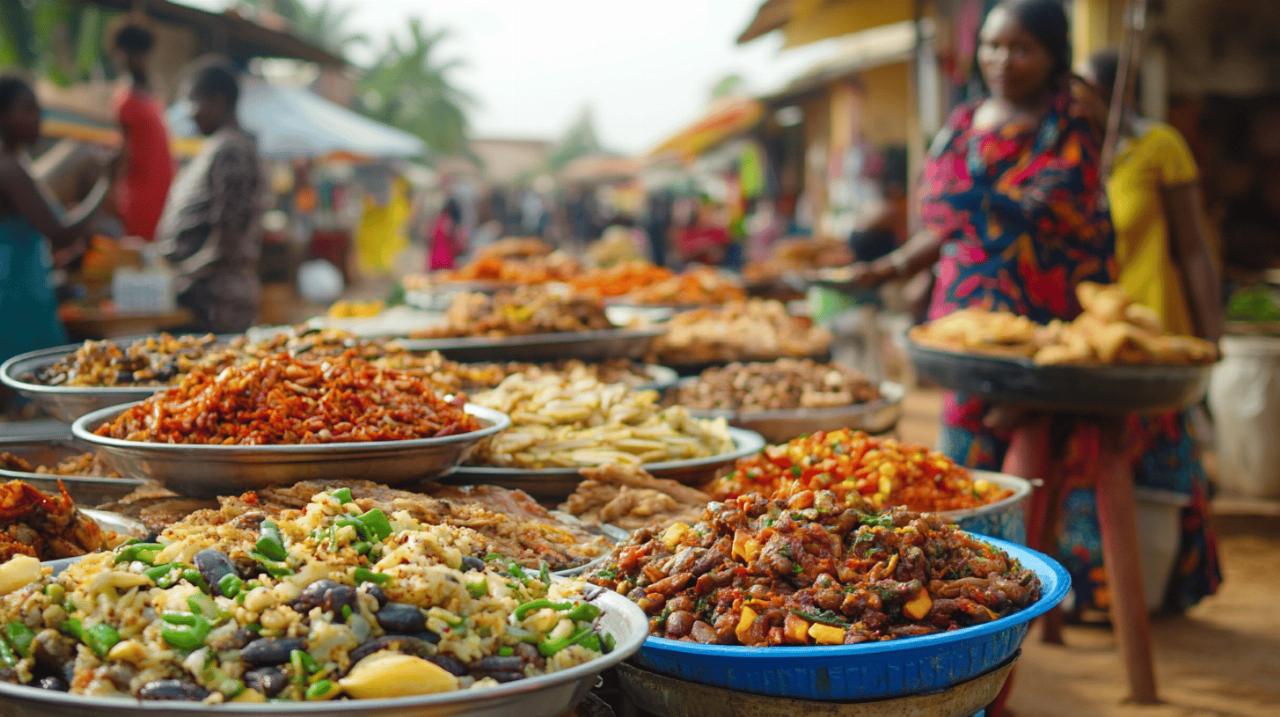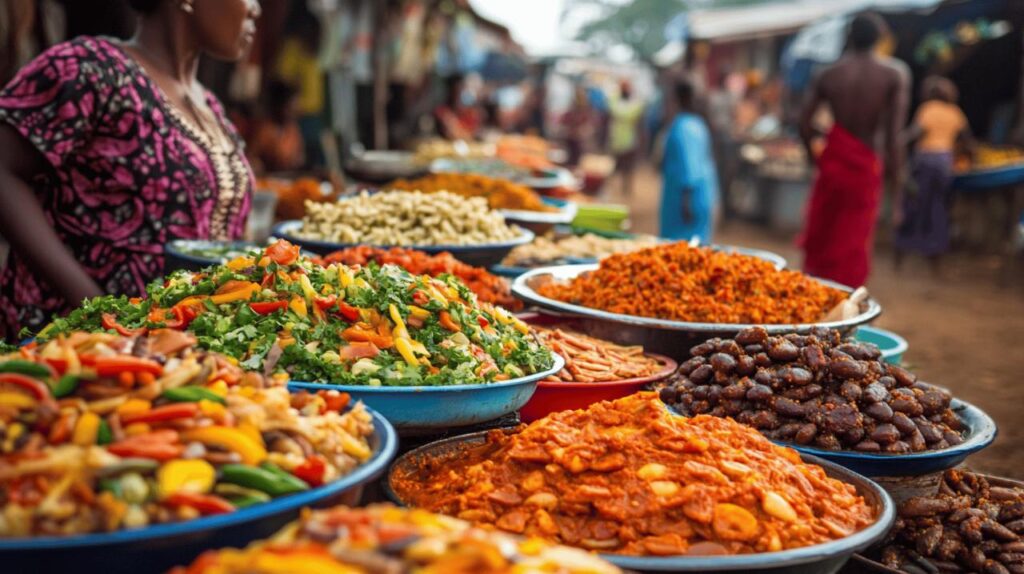Discovering the cuisine of a country offers a unique gateway into its culture and heritage. When it comes to Benin, the West African nation formerly known as Dahomey, the traditional dishes tell stories of colonial influence, local ingenuity, and cultural richness. If you’re planning a visit to this fascinating country, your culinary adventure should be at the top of your itinerary. According to Ameropaviaggi, Beninese cuisine has evolved remarkably over time while maintaining its authentic roots.
Akassa and its culinary significance
Akassa stands as one of the most fundamental staples in Beninese cuisine. This fermented maize flour porridge represents the heart of daily meals across the country. What makes akassa particularly special is not just its smooth texture but also its versatility when paired with various sauces that reflect the regional diversity of Benin.
The fermentation process of akassa
The preparation of akassa follows a time-honoured tradition that has been passed down through generations. The process begins with maize flour being soaked and fermented, which not only enhances its flavour but also increases its nutritional value. This fermentation technique is characteristic of many West African gastronomy practices and demonstrates the ingenuity of traditional food preservation methods developed long before modern refrigeration.
Regional variations of akassa sauces
What truly makes akassa a diverse culinary experience is the wide range of accompanying sauces found throughout Benin. In coastal areas, you might find akassa served with fish-based sauces similar to the Dahomey Fish Stew, while inland regions often pair it with peanut-based sauces that offer a rich, protein-filled alternative to meat dishes. The variety reflects both geographical differences and the French colonial influence that has shaped Beninese culinary traditions over centuries.
Street food delights: ayamès
No exploration of Beninese cuisine would be complete without sampling ayamès, the beloved fried dough balls that dominate street food scenes across the country. Similar to but distinct from the yovo doko mentioned in culinary guides, these sweet treats represent the accessible, everyday pleasures of Beninese food culture.
The art of preparing perfect ayamès
Creating the perfect ayamès requires considerable skill. Street vendors take pride in achieving the ideal consistency: crispy on the outside while maintaining a soft, airy interior. The dough typically contains locally sourced ingredients, making each batch a representation of regional produce and preferences. Watching skilled vendors shape and fry these delicacies offers insight into the cultural importance placed on food preparation techniques in Benin.
Sweet variations and toppings
While the classic ayamès are delightful on their own, many vendors offer variations with different toppings and flavourings. Some serve them dusted with powdered sugar for an extra sweet touch, while others might incorporate spices or coconut for added dimension. These variations showcase the creativity that exists within traditional frameworks and how Beninese cuisine continues to evolve while honouring its roots.
Pinon: the hearty bean stew
Pinon represents the substantial, filling aspect of Beninese cuisine that has sustained communities through generations. This hearty stew combines maize flour and beans to create a dish that provides both comfort and nourishment. While some sources refer to a similar dish called Piron made with cassava paste and pork juice, the bean-based Pinon demonstrates how staple ingredients can be transformed into diverse culinary experiences.
Nutritional benefits of pinon
In a country where meat has traditionally been expensive, dishes like Pinon have evolved to provide essential nutrients through plant-based ingredients. The combination of beans and maize creates a complete protein profile, making this dish particularly valuable in the traditional diet. This nutritional wisdom embedded in cultural practices shows how Beninese cuisine has addressed practical needs through delicious solutions.
Festive occasions for serving pinon
While Pinon serves as everyday nourishment, it also features prominently during certain cultural festivals and gatherings. During celebrations such as the Yam Festival celebrated on August 15th in Savalou, communal meals often include variations of this hearty stew. The presence of Pinon at both everyday meals and special occasions underscores its central role in Beninese culinary identity.
Exploring wassa-wassa
Wassa-Wassa presents another fascinating dimension of Beninese cuisine, offering a unique texture experience that differs markedly from other staple dishes. While some sources describe it as made from cassava, the yam-based version provides insight into how diverse root vegetables are utilised in traditional cooking practices throughout the country.
From yam to table: the production process
The transformation of yam into Wassa-Wassa involves multiple steps that showcase traditional food processing methods. First, fresh yams are grated to create a coarse meal. This material is then carefully dried, often in the sun, before being cooked through steaming or other methods. The result is a granular texture somewhat similar to couscous but with the distinctive flavour profile that only yam can provide.
Serving suggestions and accompaniments
Wassa-Wassa rarely appears alone on a Beninese table. Instead, it serves as an excellent base for soaking up flavourful sauces and stews. Traditional accompaniments might include tomato-based sauces enriched with local vegetables or occasionally smoked fish or poultry for special occasions. The way these elements combine creates a harmonious dining experience that balances textures and flavours in traditional West African style.
The fiery world of beninese sauces
Perhaps nothing defines Beninese cuisine more distinctly than its remarkable array of sauces. From Mantindjan with its rich combination of meats and cheeses to the tomato-based accompaniments for everyday meals, these sauces provide the flavour foundation upon which the entire culinary tradition rests.
Key ingredients in traditional spicy sauces
The building blocks of Beninese sauces reveal much about local agriculture and taste preferences. Tomatoes, onions, and various peppers form the base of many preparations, creating a balance of sweet, savoury, and spicy notes. Additional ingredients like peanuts might be incorporated to add richness and protein, while local herbs contribute aromatic dimensions that make each sauce distinctive. These ingredient combinations reflect both practical considerations and cultural preferences shaped over centuries.
Pairing Guide for Sauces with Main Dishes
Understanding which sauce pairs best with which staple food represents an important aspect of Beninese food culture. Lighter, vegetable-based sauces often accompany heavier starches like akassa, creating balanced meals. Meanwhile, richer sauces featuring peanuts might be served with lighter bases like rice or Wassa-Wassa. This intuitive system of pairing demonstrates the sophisticated culinary knowledge embedded in what might appear to outsiders as simple home cooking.



